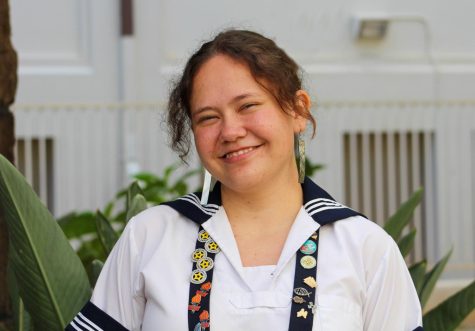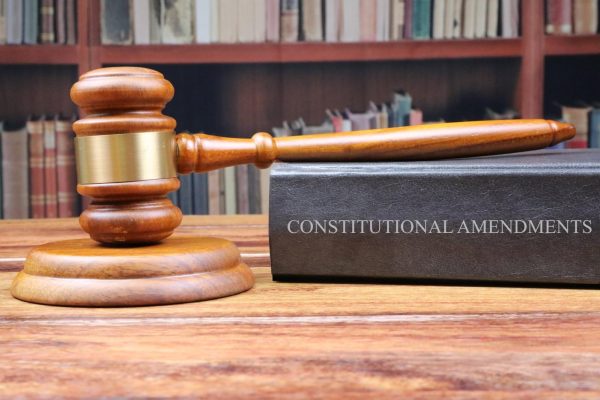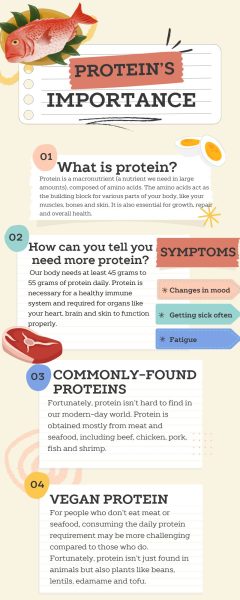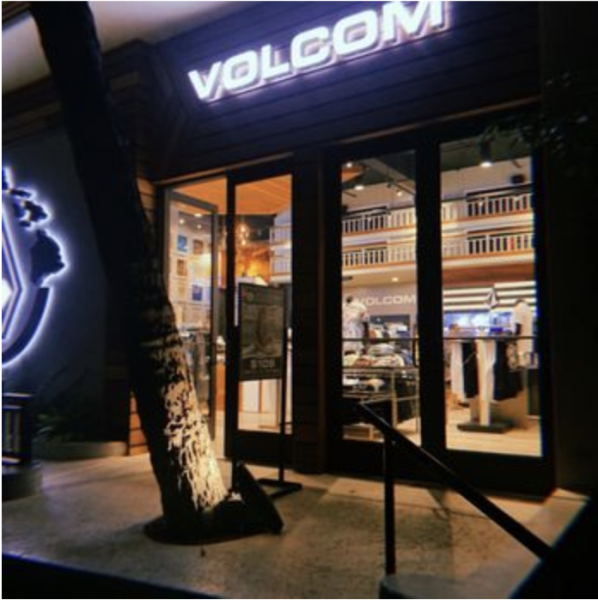Hawaii’s back alley epidemic
Sacred Hearts Academy seniors: (Top, left to right) Karissalyn Chang, Samantha Europa, Kaelin Apuakehau, Zahria Bell, Jolie Taurua, Layla Remiticado, (Bottom, left to right) Ava Damo, Emily Trueba, Abigail Walker, Aaliyah Gamboa, Vanessa Welch, and Rory Redila gather in support of the Native Hawaiian and other Indigenous children who have gone missing due to the trafficking industry. The red handprints on each of their faces is a symbol that indicates our solidarity with indigenous women and children who are missing and/or have been murdered. It also represents the fact that this is an issue where many of our stories have been silenced. “People that we are supposed to be able to trust that are all around us could be perpetrators of this very crime, and we may not even know it. However, by learning about this and realizing the effects of it, we can empower and equip ourselves with the knowledge to protect ourselves and others.” Photo by Abigail Walker.
I thought I knew the narrative of sex trafficking. Growing up, my mother was always very open about talking on sensitive topics like sex trafficking. We would talk about “the typical white van with the tinted windows or ice cream truck story,” stressing the importance of stranger danger. However, it was never something that I took too seriously since I never stopped to think about the possibilities of something like this happening around me. It wasn’t until recently that I realized that real stories of sex trafficking were happening much closer to home than I could have ever known.
Sex trafficking is defined by the Trafficking Victims Protection Act of 2000 as, “when a commercial sex act is inducted by force, fraud, or coercion, or in which the person induced to perform such act has not attained 18 years of age,” as noted by the nonprofit Child & Family Service.
Currently, there is a widespread epidemic of this happening to women, men and children here in Hawai’i, and it’s disproportionately happening to Native Hawaiians. Since the National Human Trafficking Hotline’s inception on December 7th, in 2007 by Polaris, a non-profit, the hotline has identified 330 cases of human trafficking here in Hawaii. About 775 victims were identified in these cases, as noted on the organization’s website. In 2021 alone, 30 cases were identified and 44 victims were involved.
Eric Z. Madden is an Education and Training Program Manager at Ho’ola Na Pua, an organization dedicated to preventing sex trafficking and providing care for those who have been exploited. He shared that, “According to a study conducted in 2020 by the Arizona State University alongside the Hawaii State Commission on the Status of Women, Child and Family Services and the State of Hawaii, 64% of all of the individuals surveyed as being all or some Native Hawaiian.”
This study was done on 363 participants, and nearly 100 of those were found to be sex trafficking victims living in Hawai’i between April and June of 2019. While that may seem like a small number, that was only those who were in the study and willing to be open about such a traumatic experience. How many others are out there in Hawai’i and the world who are unable to speak up about what has happened to them for fear of judgment and reliving those awful moments?
The worst part of the statistic mentioned above is that the average age of those that have reported being sex-trafficked as a child were just under 12 years old. Along with the fact that a quarter of that 64% were victims who were sex trafficked by a family member. If it wasn’t a family member, then it was either a close family friend or a significant other.
More than 75% of these victims reported being homeless as well. In fact, 1 in 3 young people are approached or recruited by a pimp or exploiters within the first 48 hours of being on the streets. These are truly horrifying statistics, which are not even the worst of the statistics out there, regarding sex trafficking in Hawaii.
Nohea Walker, Dean of Student Well-Being for 11th-12th graders at Kamehameha Schools Kapalama, is both a mom and a native Hawaiian who talks about situations like these daily both with her daughter and students that she counsels. “It makes me feel sick. I worry for the world that we are in and the unnecessary fear that humans have to face,” Walker said. How can we ensure that we know how to protect ourselves and our loved ones should something like this happen to us or someone we know? We must first make ourselves knowledgeable, regardless of how old, what we do day in and day out, or even where we live.
Walker said, “I think I assumed sex-trafficking was more of a problem on the continent or in other countries, and to know it is prevalent in our state is a scary thing,” asking the very questions we’re all thinking. Why aren’t we hearing more?
While she is not wrong in thinking that it is a problem on the continent and in other countries, as drug trafficking and sex trafficking are the two most profitable industries in the world, it is just as scary here in Hawaii. In the last 12 months, 16.5% of all high-school students in the state that have reported having been sexually abused were Native Hawaiian females. In the past two years, Native Hawaiians have made up 84% of the 37 cases publicly reported through the Missing Children’s Center. Walker isn’t the only one worrying about this.
Dayna Schultz, a member of Puhana O Na Wahine, a grassroots organization advocating for Native Hawaiian families who face challenges related to domestic violence and sexual assault, noted in the article that, “Children are very loving. They want affection and do good. Traffickers use these qualities to lure and exploit them into selling their bodies in exchange for cash, food, clothes or just a place to stay.” In fact, one of the first recorded sex trafficking incidents in the history of Hawaii happened back in 1825, when American whalers trafficked a young girl, as noted by National Indigenous Women’s Resource Center.
In understanding that, we should continue reading articles like these and spreading awareness of this very real danger for our children and communities. Even if we are not seeing it happening in broad daylight, which is when something like this is even scarier, it is important to know that it’s happening, where it’s happening, and how to protect ourselves.
One of the reasons many of us may not realize that the true nature of these incidents could be because of the fact that victims are often hidden from public view. These incidents often happen in private homes, hotels, vacation rentals, massage parlors or even online, as noted in the 2020 study mentioned above. In fact, online solicitation has been the primary form of solicitation used by traffickers to solicit buyers in over twice as many criminal cases as any other method each year since 2008.
The worst part of this epidemic is the fact that on top of the majority of the perpetrators of these cases being family members, our military also has a huge role in this issue. With 38% of people arrested for soliciting sex online from a 13-year-old being military personnel. Tourists and military service members are also estimated to represent 1 out of 3 sex buyers on O’ahu alone, these problems are not ones we can ignore any longer.
Ho‘ola Na Pua’s Madden seconded this fact when asked about what it looks like when someone is being trafficked. He explained that, “The question is hard to answer because each person’s experience is going to be unique and different to that individual. Oftentimes, we think of the person being trafficked by a stranger or kidnapped or abducted.”
However, through the study mentioned above, in 2019, 22 survivors reported that their traffickers included locals, visitors/tourists, military, law enforcement, doctors, politicians and persons working in the criminal justice system. People have also come forward and said that they were trafficked and sold on the streets, in strip clubs, at parties, on websites and even exploited at places like car shows and business offices.
This makes the reality of this issue even scarier. People who we are supposed to be able to trust could be perpetrators of this very crime, and we may not even know it. However, by learning about this and realizing the effects of it, we can empower and equip ourselves with the knowledge to protect ourselves and others.
One way that you can help and build awareness of this issue is to speak up. If you know someone who is at risk, check in with them and remind them of people they can speak to if they need help or support. Ensure that you surround yourself with a good circle of support and understand what risk factors and vulnerabilities are.
We must also spread awareness of what trafficking looks like, especially considering that less than 10% of cases involve kidnapping or abduction. Kamehameha’s Walker said that this among other things were things that she would want her own kid to know, especially going off to college.
“My daughter needs to know how to protect herself and why I worry, even though I trust her, to be off on her own or in unfamiliar places. We shouldn’t have to live scared all the time, but it’s not going to end until we actually start making changes to protect our keiki,” Walker said.
Madden also stresses the importance of online safety. He explained that, “Where there is chat, there is potential danger. Be conscious of the information you share online (where you go, what you tag, personal information you share). Set accounts to private. Do not send or share explicit videos. Verify any business, job offers, news, people. Don’t follow or allow others to follow you if you don’t know who they are.”
These are the first steps to making sure that our youth is protected and can live in a safe environment where they don’t have to worry about insane things like this. There also has to be an understanding that as of right now, there are not a lot of opportunities for victims of sex trafficking to receive help.
However, if you are a victim of or suspect any sex trafficking activity, call 911 immediately. To report child trafficking, call the Child Welfare Services’ child trafficking hotline at (808) 832-1999 for O’ahu, and 1-888-398-1188 for all neighbor islands. You can also contact your local police department or call the National Human Trafficking Hotline at (888) 373-7888. There are also organizations like Ho’ola Na Pua that are available to offer support for victims and have various different programs that exist to help others learn more about sex trafficking and how they can help.
Do not be afraid to reach out for support if you are a victim or you know of someone who is. We stand together as one, for alone we can only do so little, and divided we will fall. We cannot be afraid to speak up against this, for silence is choosing a side even if we don’t want to.

Abigail is a first-year journalism student in her senior year. During this year, she hopes to learn more about the role of a journalist and become the...




























Ava Damo • Apr 20, 2023 at 12:25 pm
I love that you are bringing awareness to this topic as it is a very important topic!
Samantha Europa • Apr 20, 2023 at 12:24 pm
Loved reading your article! So scary we ned to think about this as we get older.
Danielle Woo • Apr 20, 2023 at 12:11 pm
This article is very informative as it is very close to home 🙂
Emily Trueba • Apr 18, 2023 at 2:20 pm
Thoroughly written opinion article and amazing media!
Kaelin Apuakehau • Apr 18, 2023 at 2:14 pm
I really enjoyed this article 🙂 I was able to understand how substantial this issue really is. This article was very detailed and well written. The picture was also very powerful because my classmates and I were able to gather in support of diversity and sex trafficking.
Ember-Joy Guevarra • Apr 18, 2023 at 2:02 pm
Abi this article is so informative and I love this picture!